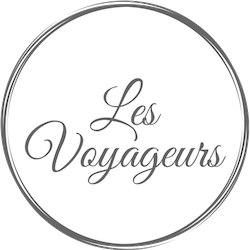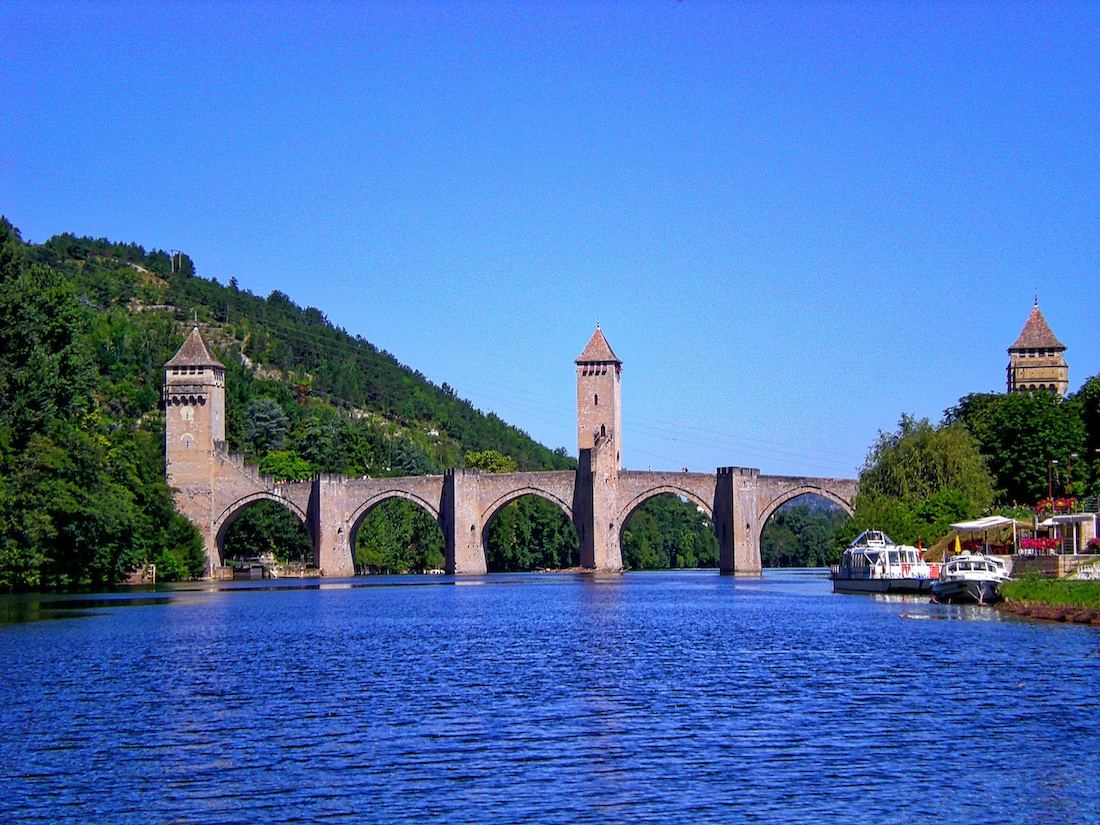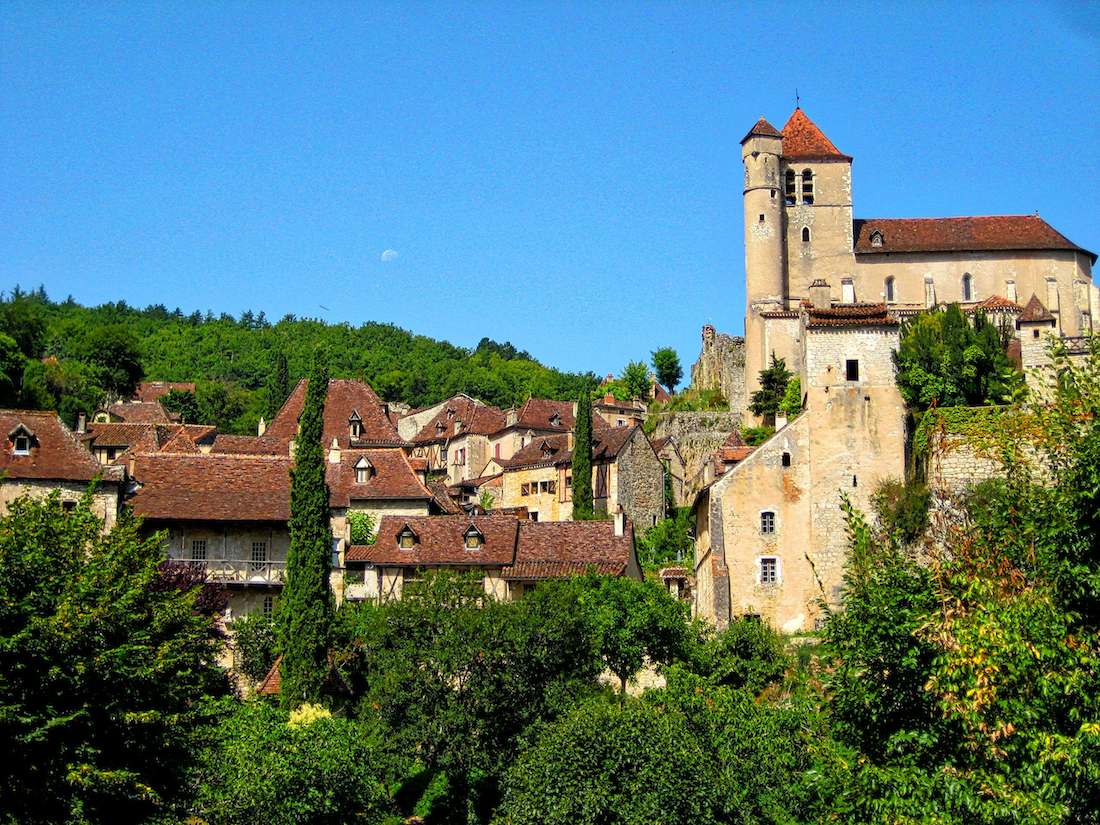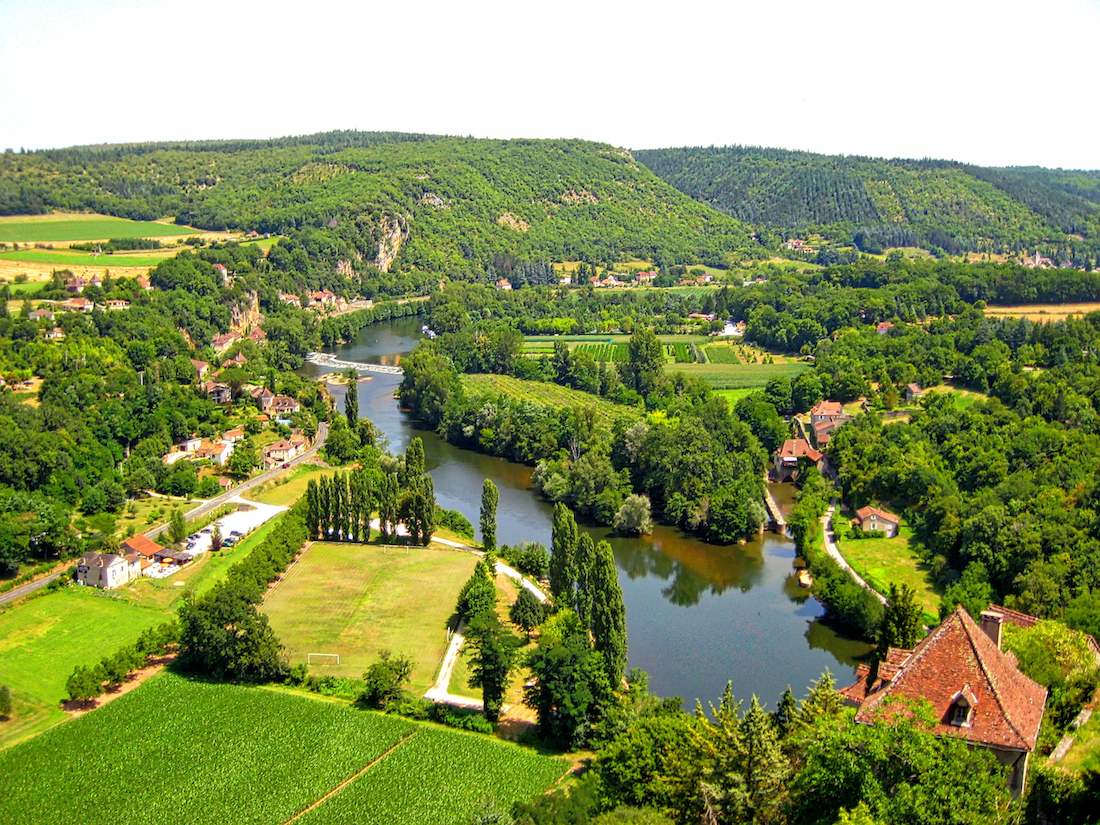The Lot valley is a beautiful part of France South West in the Midi-Pyrennées region, the Lot takes its name from the snaking river crossing the département (region). The Lot river is bordered by very steep cliffs, plateaux, vineyards, medieval villages, castles and churches. The Lot region is famous for its gastronomy: the foie gras, duck magrets, Cahors wine, cheeses which can be bought in the village markets.
Cruising the canals and rivers of France on a péniche (houseboat) is a wonderful way of discovering France’s rich and diverse countryside. Every year, growing up, my family would hire a péniche in Spring and we would stroll through a canal or a river for a week in different regions of France. France has an amazing network of canals and rivers that are now being almost exclusively geared towards tourism.
As a child, I remember being overwhelmed by the size of the barges compared to our little péniche, we would cross ways or sharing a lock with commercial barges rushing to get their dry goods delivered and speeding through the locks while we were leisurely cruising. I used to love going through the locks opening and closing the gates, filling or emptying the lock to go up or down depending if you were going downstream or upstream (‘avalant’ or ‘montant’ are the French technical terms).
We started off in Luzech to pick up our Péniche and traveled to Larganol, cruising through Cahors and Saint Cirq Lapopie. Life on the péniche is very simple, you basically eat, sleep and cruise on the Péniche. We loaded all our gear on board: food, barbecue as well as our bikes onto the Péniche, so we could go shopping in the nearby village or sometimes ride along the canal towpath. Near the Ganil ecluse (lock) the canal towpath (Chemin de Halage) was carved out of the cliff back in 1845 to let horses go and pull barges. One section of the limestone cliff has been sculpted by Daniel Monnier. You can also swim in the river, near Saint Cirq Lapopie on hot days.
While cruising, you alternate going through towns, small villages, remote areas and going through locks after locks, 31 in total. We moored somewhere different every night on the bank of the canal and cooked the food we bought that morning at the markets. Make sure to check the jour de marché for each town or village, in Cahors the marché is on on Wednesday and Saturdays.
Near Cahors, you can stop by and moor your peniche at the vineyard for wine degustation and buy some ‘Cahors’ wine which marries perfectly with the duck confit that is available everywhere in the region also known as the ‘duck country’.




































































